
SYMBOLIC ELEMENTS
(You may choose 1 or 2 Symbolic Elements for your ceremony. If you have anything in mind that is not listed here, let me know, and we will discuss it. )
COIN
CEREMONY

In a more modern adaption, the coins can represent different values that the couple wants to share between themselves: Love, Harmony, Cooperation, Commitment, Peace, Happiness, Trust, Respect, Caring, Wisdom, Joy, Wholeness, Nurturing.
A Filipino tradition is that the ring bearer will also carry the coins down the aisle in a coin purse, on a pillow or in an ornate box. The Officiant will say a blessing, wishing the couple prosperity. He then gives the coins to both the couple, usually pouring the contents of the purse or box into their open palms.
Here is a possible Coin Ceremony sample:
“These 13 coins traditionally represent the promise of the groom to support his wife and the wife’s dedication to her husband. But today, more than this, it represents that ________ and ________ are united in love and harmony.
________ and ________, accept that these coins that represent that your love and dedication to each other will be the true prosperity of your marriage to each other.
Promise that you will love and support each other for eternity. Please repeat after me:
I, Spouse1, promise you that I will love and support you forever.
I, Spouse2, promise you that I will love and support you forever.
In exchanging these coins, ________ and ________ are vowing undying devotion and support. As we witness their acceptance of these coins, we also witness their willingness to be blessed with each other’s company, with each other’s dedication and to always be there in heart and soul for each other in good times and in bad times.”
DOVE
CEREMONY
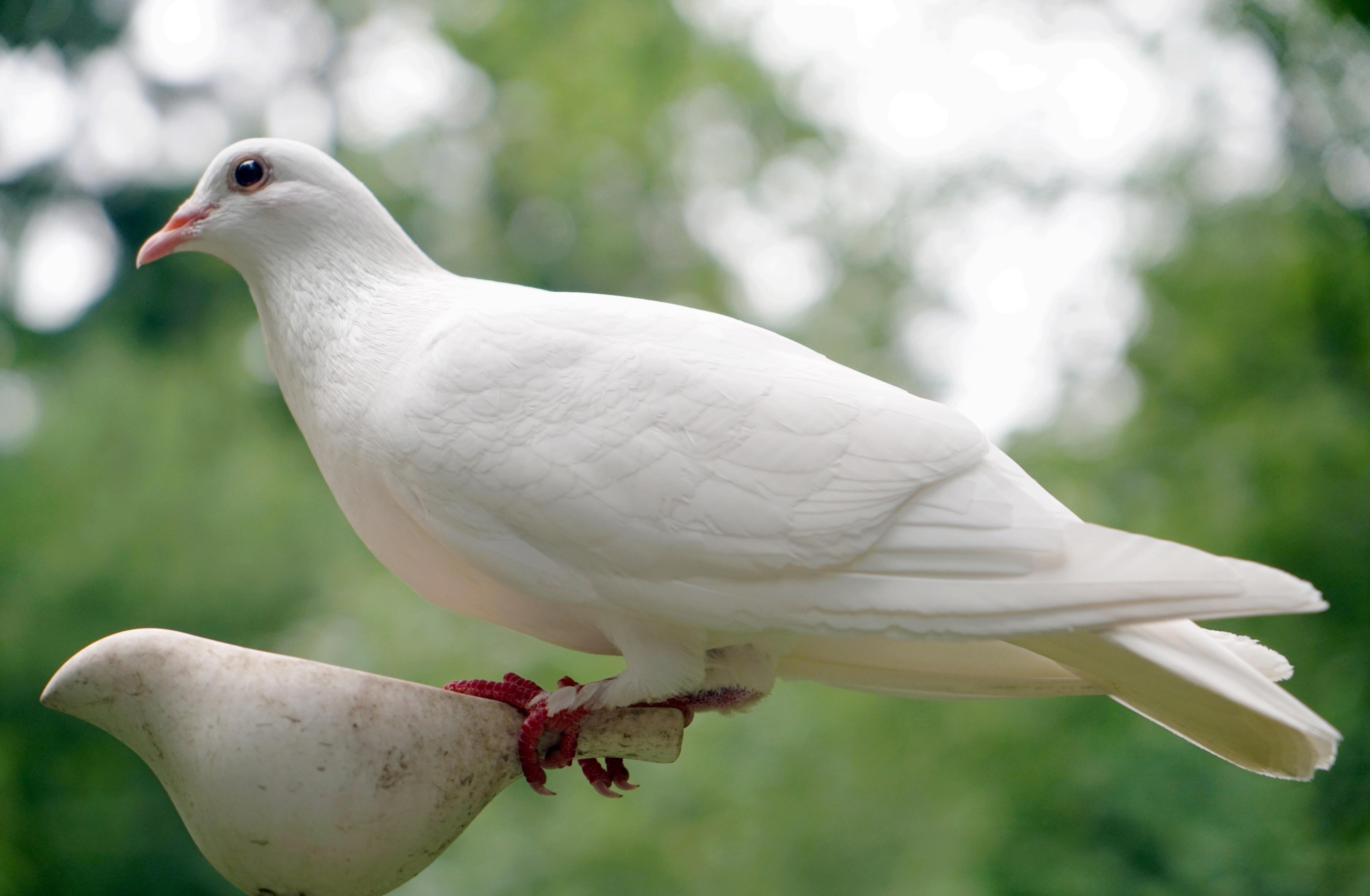
They can also be released at the beginning of a service to acknowledge the memory of a deceased loved one.
Ceremony wording sample:
“It is said that if White Doves are seen on your wedding day, a happy home is assured and good luck will come to all who witness their release. Their participation in your wedding ceremony is very special.
Today as you both make a promise to be together, the release of two White Doves represents your commitment to one another, much like the dove that mates and remains faithful for life.
Marriage is a supreme sharing, perhaps the greatest and most challenging adventure in the most intimate of human relationships. It is not a giving up or loss of oneself, but rather a giving over of oneself to something greater-a transformation of self in which each one can say, “I am no longer only I but also we.” And those who take these sacred vows have their lives blended together into one, as the waters of two rivers are joined when they come together to form an even greater one.
__________ and __________, we wish for you that your life together will be rich and rewarding; filled with love, peace, and harmony; three wonderful qualities that the White Dove represents.
The release of these two doves is also a symbol all of the blessings and best wishes from your family and friends who are with us today, all witnessing this moment when your new journey as husband and wife begins.
__________ and __________, you may now release the white Doves, giving your Love wings!”
GLASS BREAKING
CEREMONY

”May your bond of love be as difficult to break as it would be to put together the pieces of this glass.”
The glass is usually a light bulb wrapped in a white towel. The best man will place the glass before the groom. However, it is not broken at this point. Instead, the officiant continues to declare the bride and groom to be “husband and wife”. With “congratulations, you may kiss your bride!” the groom then smashes the glass with his foot and kisses the bride.
One possible wording:
“We conclude this ceremony with the Breaking of the Glass.
In Jewish tradition, the Breaking of the Glass at a wedding is a symbolic prayer and hope that your love for one another will remain until the pieces of the glass come together again, or in other words, that your love will last forever.
The fragile nature of the glass also suggests the frailty of human relationships.
Even the strongest of relationships is subject to disintegration.
The glass then, is broken to “PROTECT” the marriage with the implied prayer – MAY your bond of love be as difficult to break as it would be to put together the pieces of this glass.”
HAND CEREMONY
or
BLESSING OF THE HANDS
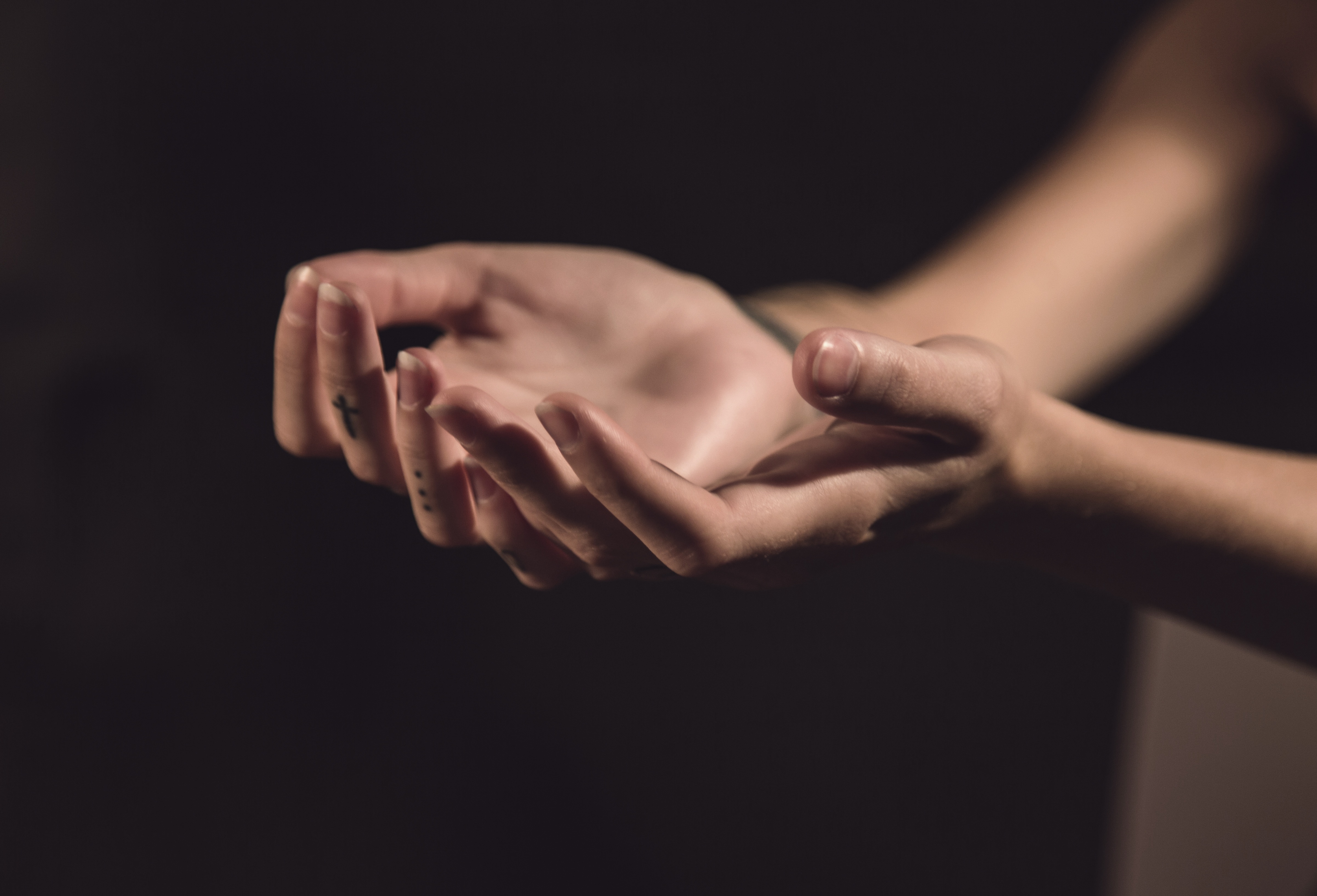
There are various lengths and wordings from which to choose, making it adaptable to almost any wedding service. Here is one version:
“These are the hands of your best friend, young and strong and full of Love.
These hands are holding your hands on your Wedding Day, as you promise to Love each other today, tomorrow and forever.
These are the hands that will work alongside your hands, as together you build your future.
These are the hands that will passionately love you and cherish you through the years, and with the slightest touch, will comfort you like no other.
These are the hands that will hold you when fear, grief or challenge fill your mind.
These are the hands that will countless times, wipe the tears from your eyes;
tears of sorrow, and tears of joy.
These are the hands that will tenderly comfort and hold your children.
These are the hands that will help you hold your family as one.
These are the hands that will give you strength when you need it.
And lastly, these are the hands that even when wrinkled and aged, will still be reaching for yours, still be giving you the same unspoken tenderness and love with just a touch.”
HAND FASTING
CEREMONY

This element is easily customized, as the couple can choose what they will use – silky ribbons, thick or thin chords, fabric taken from heirloom dresses, (or basically anything that could be theoretically tied around two hands,) how many chords there will be, and whether the fasting is done by the officiant or someone close to the couple.
A sample reading:
Officiant: Marriage forms eternal and sacred bonds. The promises made today bind your lives together. Do you still seek to enter this ceremony?
Couple: “We do.”
Officiant: Please hold hands and look into each other’s eyes. Will you honor and respect one another, and seek to never break that honor?
Couple: “We will.”
(Officiant wraps the cord once, loosely, over the couples’ hands.)
Officiant: Will you share each other’s pain and seek to ease it?
Couple: “We will.”
(Officiant wraps cord again over the hands.)
Officiant: Will you share the burdens of each so that your spirits may grow in this union?
Couple: “We will.”
(Officiant wraps cord again over the hands.)
Officiant: Will you share each other’s laughter, and look for the brightness in life and the positive in each other?
Couple: “We will.”
(Officiant wraps cord again over the hands, then ties together.)
Officiant: As your hands are now bound together, so your lives are joined in a union of love and trust. The knots of this binding symbolize the vows you have made. Like the stars, your love should be a constant source of light, and like the earth, a firm foundation from which to grow.
May this knot of love remain forever tied, and may these hands be blessed. May they always be held by one another. May they have the strength to hold on tightly during the storms of life. May they remain tender and gentle as they nurture each other. May these hands build a relationship of love, caring, and devotion. May you see each other’s hands as healer, protector, shelter and guide.
LOVE LETTER ANNIVERSARY BOX CEREMONY
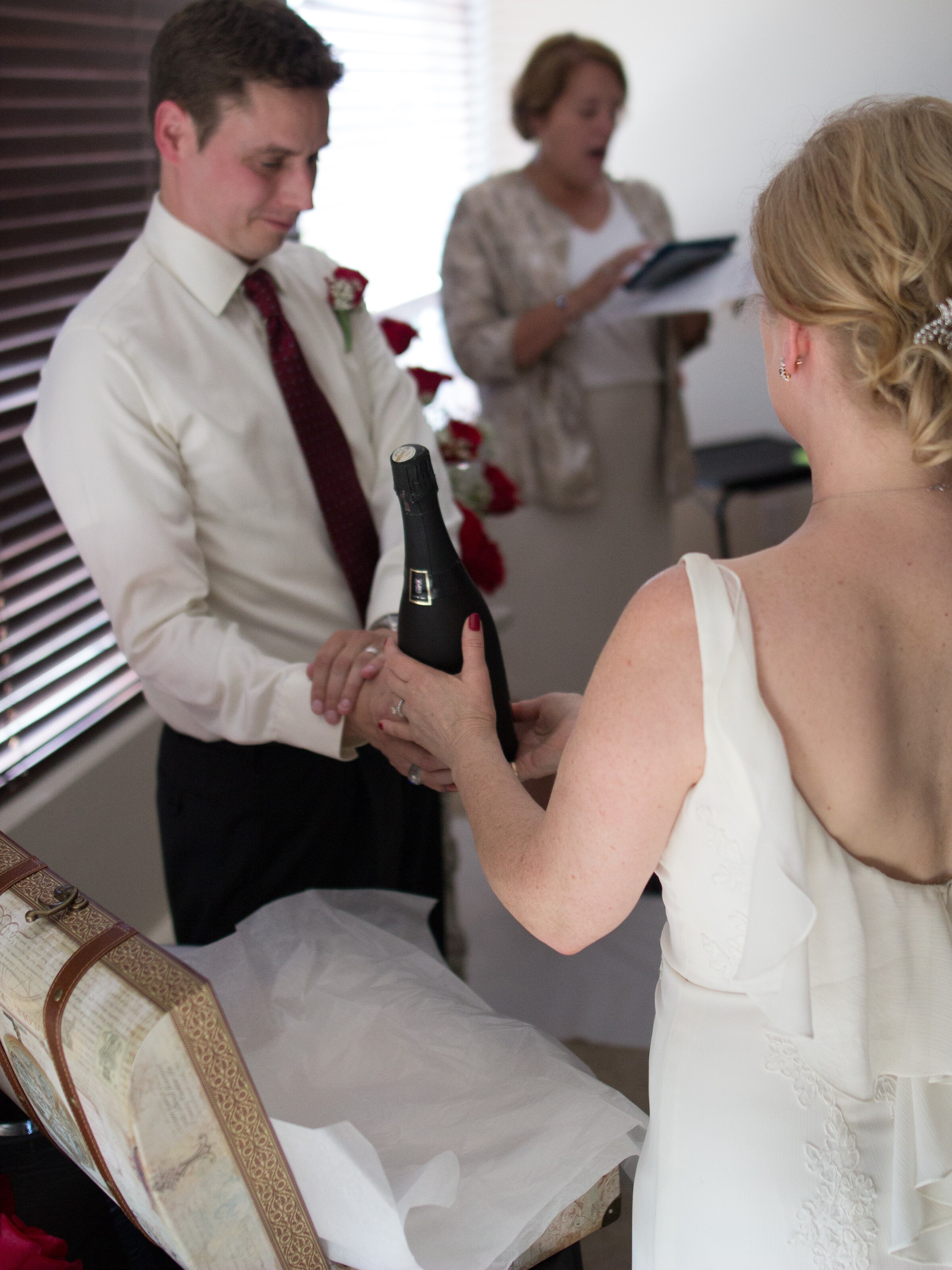
As the two of you place your items in the box, the officiant describes the contents and explains the purpose of this ceremony. For example:
“Our couple has chosen to create a Love Letter Anniversary Box. This box contains a bottle of wine, two glasses, and a love letter from each to the other. The letters describe the good qualities they find in one another, the reasons they fell in love, and their reasons for choosing to marry. The letters are sealed in individual envelopes and they have not seen what the other has written. You have created your very own “romantic” time capsule to be opened on your wedding anniversary.
I recommend that you keep the box in a place of honor prominently displayed in your home as a constant reminder of your commitment to each other.
Should you ever find your marriage enduring insurmountable hardships, you are to, as a couple, open this box, sit and drink the wine together, then separate and read the letters you wrote to one another when you were united as a couple in marriage. By reading these love letters you will reflect upon the reasons you fell in love and chose to marry each other here today.
The hope is, however, that you will never have a reason to open this box. And if this is the case, you are to open this box to share and enjoy on your wedding anniversary!”
[A personal note: Rev. Chad and I created our own Anniversary Box when we were married. We added our etched toasting glasses after they were washed, and also the cards from all our gifts. A year later we enjoyed a romantic and meaningful walk down memory lane. What a lovely way to celebrate our first anniversary! In fact, our Anniversary Box still has an honoured place in our home, since we will continue the tradition for future anniversaries!]
LOVING CUP
CEREMONY
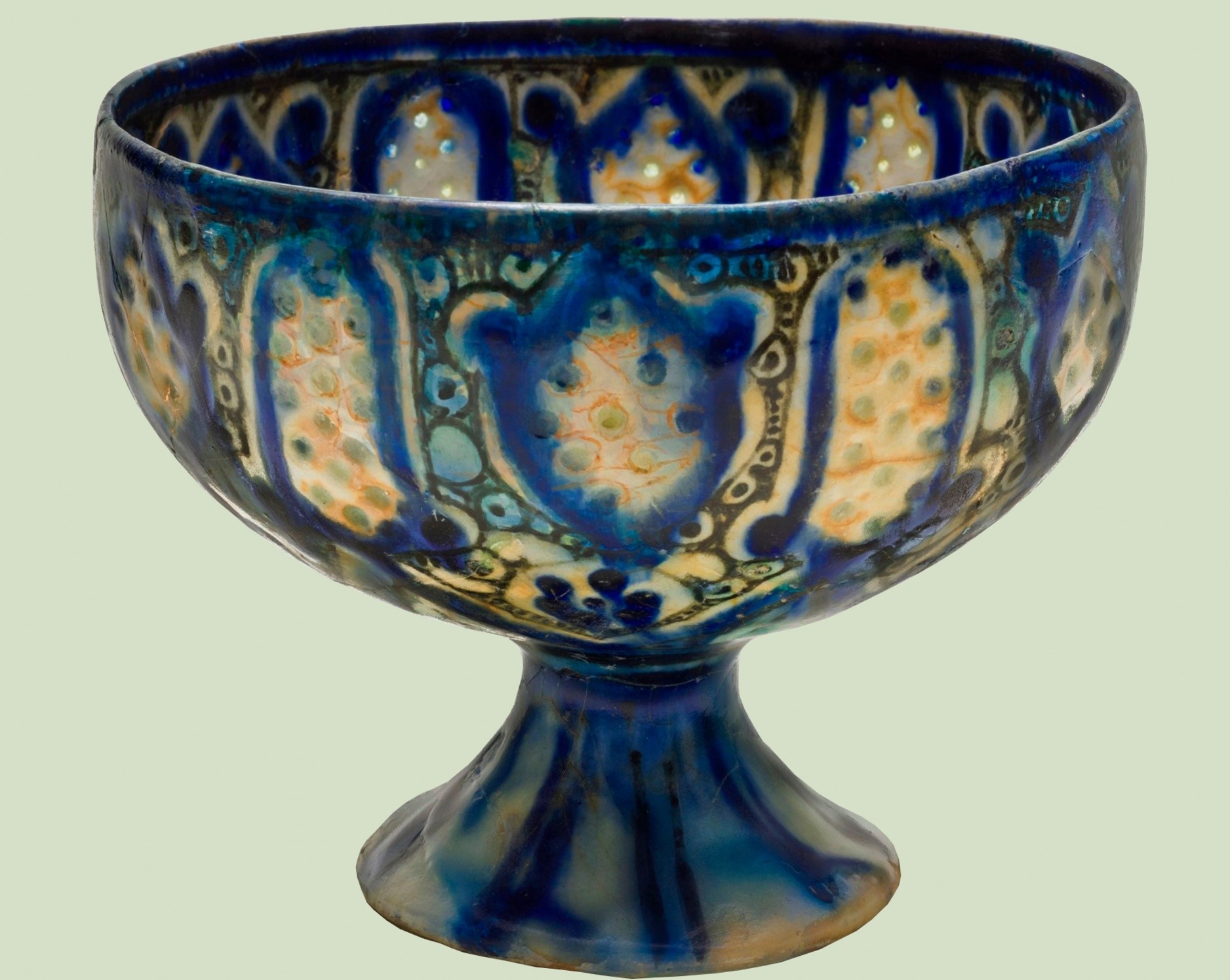
The reading can be expanded to include children and other members of the family, or any ideas that the couple can imagine, making it spiritual, personal and unique. Here is a sample:
“Officiant: On this day we celebrate as you are joined in an eternal bond with the person you most cherish. With each other, you will let go of the fear to Love and be Loved. You will have a rhythm of grace to reawaken into your new life together……A new beginning.
(The Officiant pours the wine into the Loving Cup and holds it up.)
Officiant: And now drink to the Love you’ve shared in the past.
(The couple take turns sipping from the Loving Cup, or toasting each other if using two separate glasses.)
Officiant: And now drink to your Love in the present, on this your Wedding Day.
(The couple take turns sipping from the Loving Cup.)
Officiant: And now drink to your Love in your future and forever more.
(The couple take turns sipping from the Loving Cup.)”
Afterward, the ceremony can continue to include family, and even all guests. While the cup is sometimes passed around, you may choose to provide individual glasses for others to drink the toast together:
“Officiant: As you pass this Loving Cup down to generations in your family it will contain within it a wine that is symbolic and sweet with Light, Life, love, Peace, Power, Beauty and Joy. The wine also holds some bitter properties of disappointment, sorrow, grief, and life’s challenges. Together the sweet and the bitter represent Love’s Journey and all the experiences that are a natural part of it. From this day on, you will share all things with Love and understanding.”)
JUMPING THE BROOM
CEREMONY
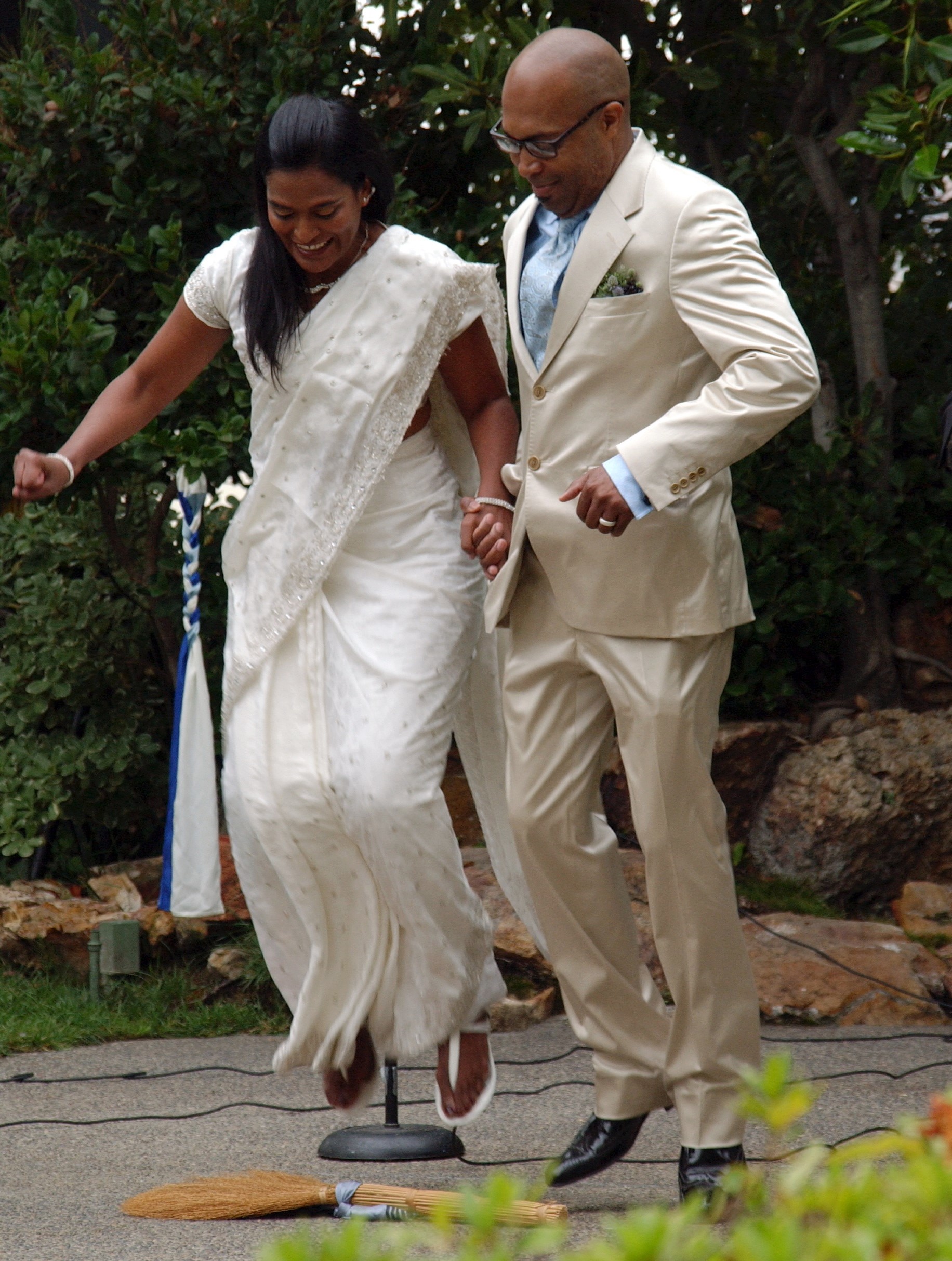
Here is a sample wording:
“Officiant: We end this ceremony with the African American tradition, Jumping of the Broom. It represents great joy and at the same time serves as a reminder of the past and the pain of slavery.
As our couple jumps the broom, they physically and spiritually cross the threshold into the land of matrimony. It marks the beginning of making a home together. It symbolizes the sweeping away of the old and the welcoming of the new; the sweeping away all negative energy, making way for all things that are good to come into your lives. It is also a call of support for the marriage from the entire community of family and friends.
The couple will now begin their new life together with a clean sweep!
(An attendant hands the broom to the groom, who makes sweeping gestures to eliminate any negative energies. The groom then hands the broom to the bride, who places it on the ground in their path.)
Officiant: Everyone count 1, 2, 3… Jump! Together! 1, 2, 3… Jump!
(The bride and groom jump over the broom, then kiss. Immediately, the music begins and the couple recesses down the aisle to the cheers of family and friends, or, if this is part of the reception, someone announces, ‘Let the party begin!’)”
MARRIAGE BRAID
CEREMONY
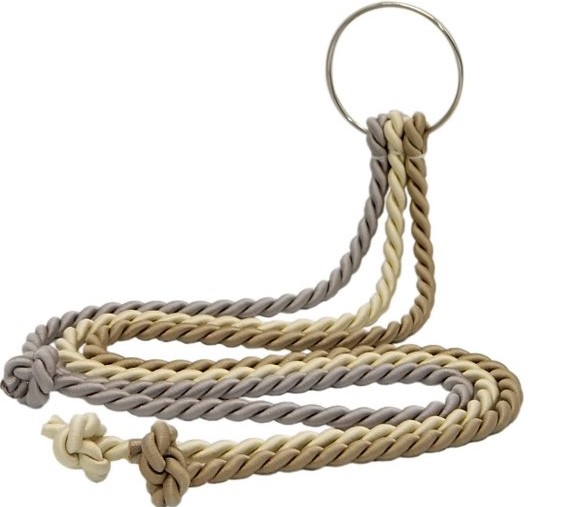
It can serve as a substitute for the unity candle, which is useful when lighted candles are not permitted, or where their use may be difficult, such as during an outdoor wedding.
Following the exchange of vows and rings, The officiant, or another individual holds a small metal ring with three attached strands. (Or the groom can hold the ring while the bride braids.) This symbolizes the union of God, husband and wife.
The following example, or another of your choosing, is read by the officiant while the braiding is accomplished:
“Today, Spouse1 and Spouse2 have chosen to braid three strands together into a single cord. Each strand has a significant meaning. The gold strand represents God who has given the gift of love. The purple strand represents Spouse1 and his/her/their life. The white strand represents Spouse2 and his/her/their life. In braiding these three strands together, Spouse1 and Spouse2 are demonstrating that their marriage is more than a joining of two lives together. It is a unity with God as well. They have chosen to allow God to be at the center of their marriage, woven into every aspect of it.
As Ecclesiastes 4:9-12 reads, ‘Two are better than one, because they have a good return for their work: If one falls down, his friend can help him up. But pity the man who falls and has no one to help him up! Also, if two lie down together, they will keep warm. But how can one keep warm alone? Though one may be overpowered, two can defend themselves. A cord of three strands is not quickly broken.'”
MEMORIAL CANDLE CEREMONY
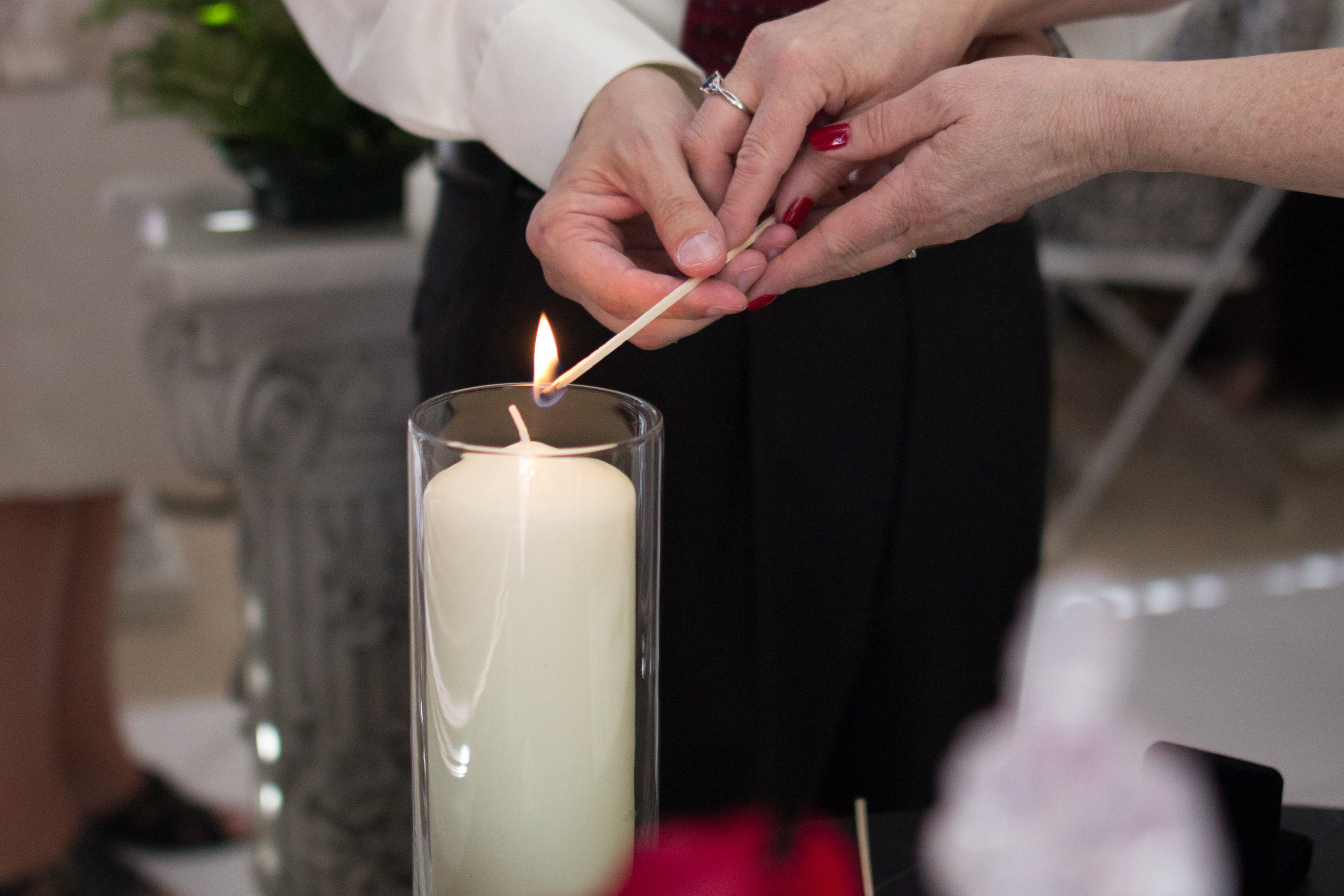
A sample wording:
“Our couple has chosen to light a Memorial Candle in remembrance of ________.
Today we pause to reflect upon those who have shaped our character,
molded our spirits and touched our hearts. May the lighting of this candle be a reminder of the memories we have shared, a representation of the everlasting impact made upon our lives.”
RING WARMING
CEREMONY

Here is an example of the wording:
“Having such love in their hearts for each other ________ and ________ have chosen to exchange rings as a symbol of their vows.
The wedding rings are the most visible sign of the bond these two people are about to make.
A commitment to life, to each other and to the future.
What I now ask ________ and ________’s families to do, is to warm these rings by passing them down the row.
As you each hold them in your hands, pause for just a moment. Warm them with your love, and silently make a wish or ask a blessing for this couple and their future together.
These rings will not only be a gift from one to another but will be given with the love, support and wisdom of their family and friends.”
ROSE
CEREMONY
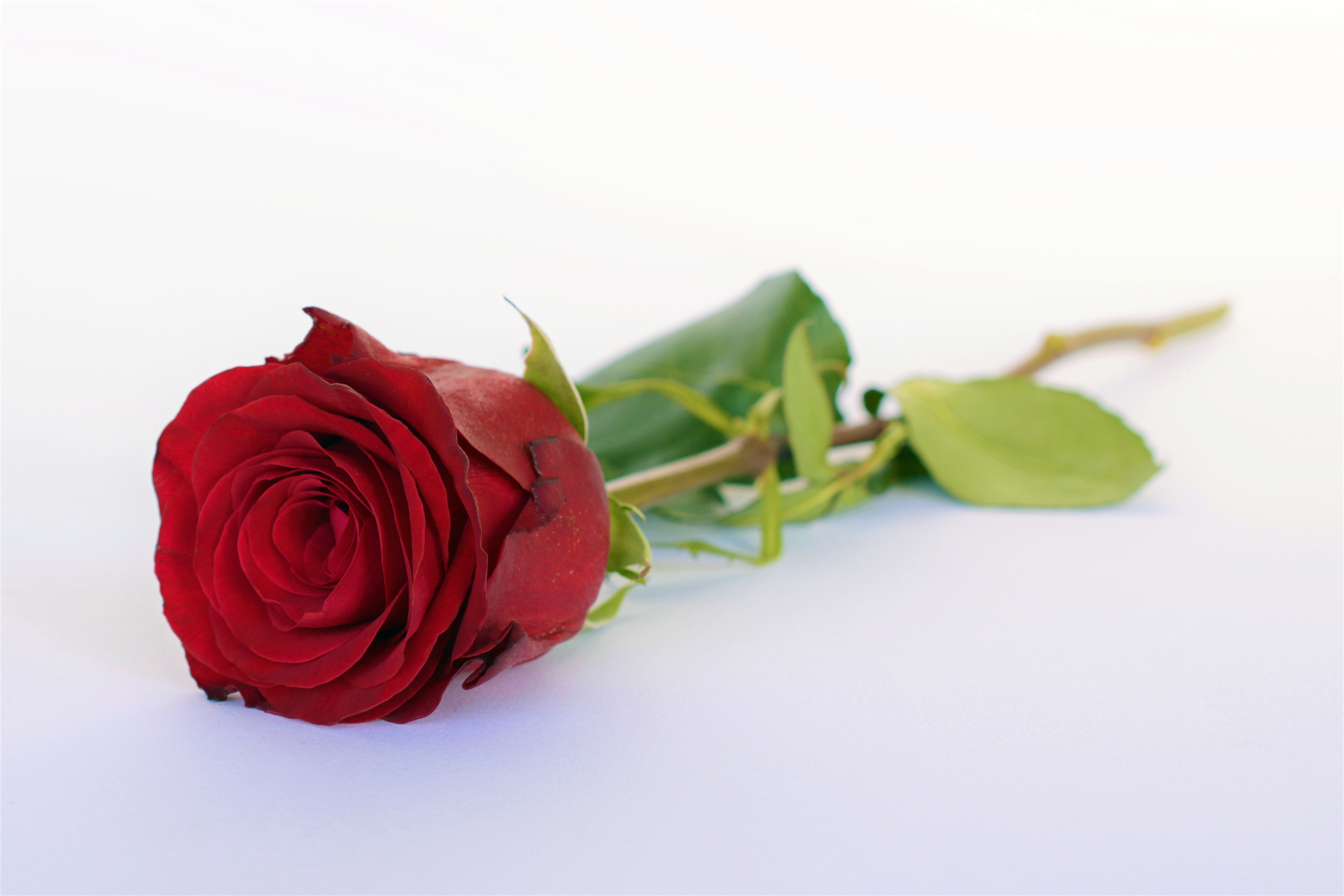
In another tradition, roses are exchanged as the couple’s first gifts to one another in marriage. This would take place at the end of the ceremony, just before the pronouncement.
Here is a sample wording:
“Your gift to each other for your wedding today has been your wedding rings – which shall always be an outward demonstration of your vows of love and respect; and a public showing of your commitment to each other.
But for your first gift as a married couple, I want you now to give each other the gift of a single rose. Please exchange your first gift; a symbol of the true and abiding love within the devotion of marriage.
Remember, the single rose says the words: “I love you”.
There may be times filled with happiness, sorrow, tears or laughter. Whatever it may be, remember love has given you wings.
Your journey begins today. And if the challenges of life or marriage begin to weigh on you, go out and get a rose. Put it in a special place in your home, so that you will both be reminded of this moment, and of the love you feel for one another.”
For blended families, after exchanging roses, the Officiant could add:
“Not only are_____________ and________ creating a marriage today, but they also are forming a family with (child/children’s name (s)). Just as it is appropriate for ________ and________ to declare their love for each other in the gift of a rose, they also wish to show you (to the children) how much they love you.”
(The couple then gives each of their children a rose, a hug, and whispers, ‘I love you.’)”
SAND
CEREMONY

Some prefer to use the first half of the sand to create two layers of the individual colours, before mixing the second half. They do this to acknowledging their love, acceptance, and respect for one other’s individuality within the unity of marriage. Another option for is for families. Children may be included in the ceremony by adding additional colours of sand.
Here is one possible wording:
“Officiant: Today our couple is taking part in a Sand Ceremony. Two colours of sand are layered in a vase to symbolize the importance of the individuals within the marriage and the joining of the two lives into one entity.
The sculpture begins with layers of the individual colours representing our couple and symbolizing the foundation of their marriage, which is based on the strength of the individuals.
(The couple takes turns pouring half their sand, each forming a layer with their own colour.)
Officiant: For the final layer, the couple will combine their colours to symbolize the joining of their lives as one in marriage.
(The couple pour their remaining sand together to form a blended layer, and the container is then sealed).
Officiant: Just as these grains of sand can never be separated and poured again into the individual containers, so will your marriage be. ”
[Photo credits: “Sand Ceremony” by Gail – Flickr [cc-BY-SA 2.0] Some rights reserved]
TEA
CEREMONY

In many Asian cultures, a Tea Ceremony is a separate ceremony to honor the elders, and it takes place prior to the wedding. However, if couples are not doing a formal Tea Ceremony it can be incorporated into the wedding. A tea tray with a pot of tea and an appropriate number of glasses are set out, and at the prescribed time it is served to the parents and/or elders.
The following words can be said by the officiant:
“The Tea Tray
It represents the sturdy, solid, foundation you both have received from your families. Your family is here to share in the joy and help you with challenges you will experience.
Warming/Tempering of the Cups
The first year of marriage will set the tone or temperature of your lives together. To prevent cracks, one must never place hot water into a cold cup but instead gently warm it. You must temper your emotions with one another with love.
Tea leaves
Just as we brew or steep the tea leaves, you each should never let any anger fester or steep too long for this will create a bitter and undesirable flavor. Instead, expect heat and challenges and the anger that sometimes comes with them. It is through these are challenges that you both can learn about each other and go with the flow and your marriage will be brewed in love and trust.
Serving of others
The serving of the tea to the elders is your way of thanking them for the experiences they have shared with you. Their knowledge combined with your life experience will help you
TREE PLANTING
CEREMONY

A Tree Planting Ceremony is especially good for an outdoor wedding, but this ritual can easily be done inside as well. The tree is not actually planted in the ground during the ceremony. It is symbolically planted as the couple puts dirt and water into the potted sapling container. Then later they plant the tree at their home or special place.
During the
Here is a sample of the ceremony wording:
Officiant: “Today, our couple has chosen to have a Tree Planting Ceremony.
A tree is a thing of beauty. While it doesn’t seem like much at first, very soon its roots will spread within the earth, acting as a firm foundation from which it can grow to be strong and true. Its branches will then reach up and out, create one thick beautiful canopy, sometimes basking in the sun, and sometimes weathering the storms of life.
_____&_____ are deeply rooted in their commitment to one another, sharing in all the goodness that has come since they first found this enduring love. Together they have built a relationship that proves to be strong and faithful. They are willing to stand united in fair weather or in storms. And while they are each a shelter to the other, I also see respect and acceptance. They each allow the other to thrive, to dream and to grow, two amazing branches reaching for the stars, yet always supported by the love they share.”
TRUCE BELL
CEREMONY

Bells are symbolically associated with weddings, and their ring is said to bring good luck. Bells are also commonly used to get attention, as a signal or an announcement of a significant event.
In the Truce Bell Ceremony, a bell is blessed by the officiant and presented to the bride and groom. The couple rings the bell
The ceremony wording will be something like this:
“Officiant: ________ and ________ have an expectation of marriage that is not only romantic but also realistic, and they wish to express this within the context of their wedding ceremony with this Truce Bell. Bells have long been associated with weddings as their joyous tones announce good tidings, but this bell has an additional purpose.
________ and ________, I want each of you to now think of all the special things you love about the person standing before you today. Think about what they mean to you, and what makes you want to spend the rest of your life with them. Think also about all the wonderful things you hope for your future together. While holding on to these thoughts, give this bell a hardy ring.
(Pause for ringing.)
________ and ________, I hereby bless this bell; may its familiar sound always bring back memories of what you were thinking the first time you rang it. Keep this bell in your home to remind you of your wedding day, your love, and your hopes. When arguments arise, and they will, put this bell to its best use. One of you should ring the bell to call a truce. Its sound will remind you of your vows, conjure up the happiest memories from this day, and encourage you to resolve your differences in a loving and compassionate way.”
UNITY CANDLE
CEREMONY
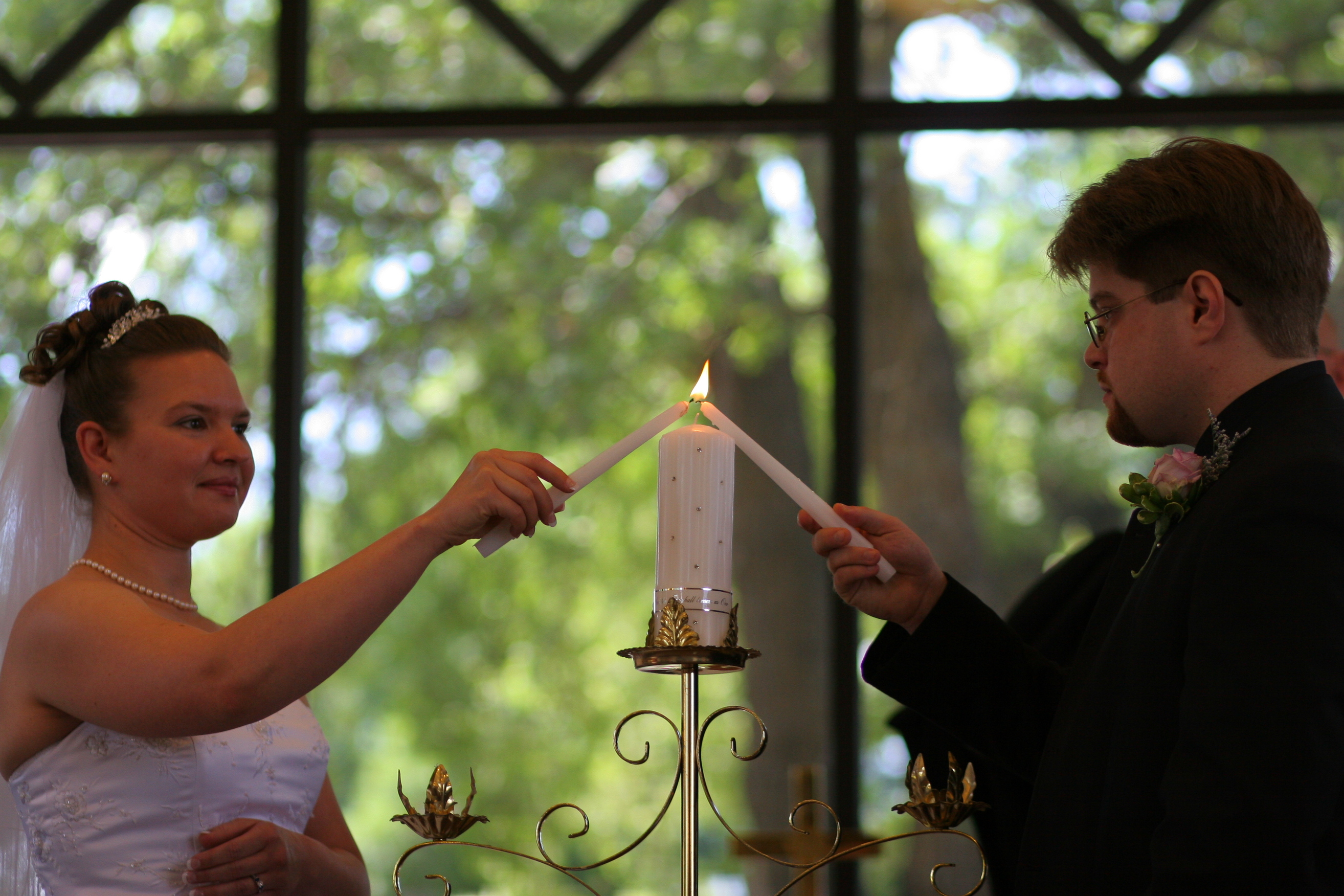
The unity candle symbolizes the very essence of the wedding ceremony. Two taper candles, representing the couple as individuals, are used to light a single center candle as a visible symbol of their commitment to each other. There are many variations on the ceremony and the individual details are completely up to the couple. Here is a sample wording:
“Our couple has chosen to celebrate this union with the lighting of the unity candle.
______and ________ please light the two taper candles. These candles represent your individual spirits, your individual connections with God, all that you are and, all that you have been, and all that you will become.
(Couple individually lights one candle each.)
The center candle represents your relationship. It is the symbol of your marriage, the symbol of the joining of 2 lives; 2 souls. Now, please take the tapers and light the center candle. As you do so, keep in mind the pledge you made to each other today. It is the pledge of the truth and purity of your every breath. The constant friendship of your hearts. The passion and fire of your spirits and the deepest love your souls have to give. It is the pledge of all that is within you. The only true pledge that one heart can offer to another.
(Couple uses the two tapers to, together, light the center candle.)
You offer yourselves, and all that has come to pass unto each other, towards the creation of your future, and to all that is yet to come. The candle of your marriage shall burn brightly, but the 2 tapers of yourselves are not diminished. You do not disappear in marriage. You remain you. But in joining, both lights are brighter, each supports the other and miracles can happen. True Love shines brightly and today is but a beautiful beginning of the miracles to come.”
[Photo credits: “Unity Candle” by Joshua Hayward – Flickr [cc-BY-SA 2.0] Some rights reserved]
UNITY PAINTING
CEREMONY
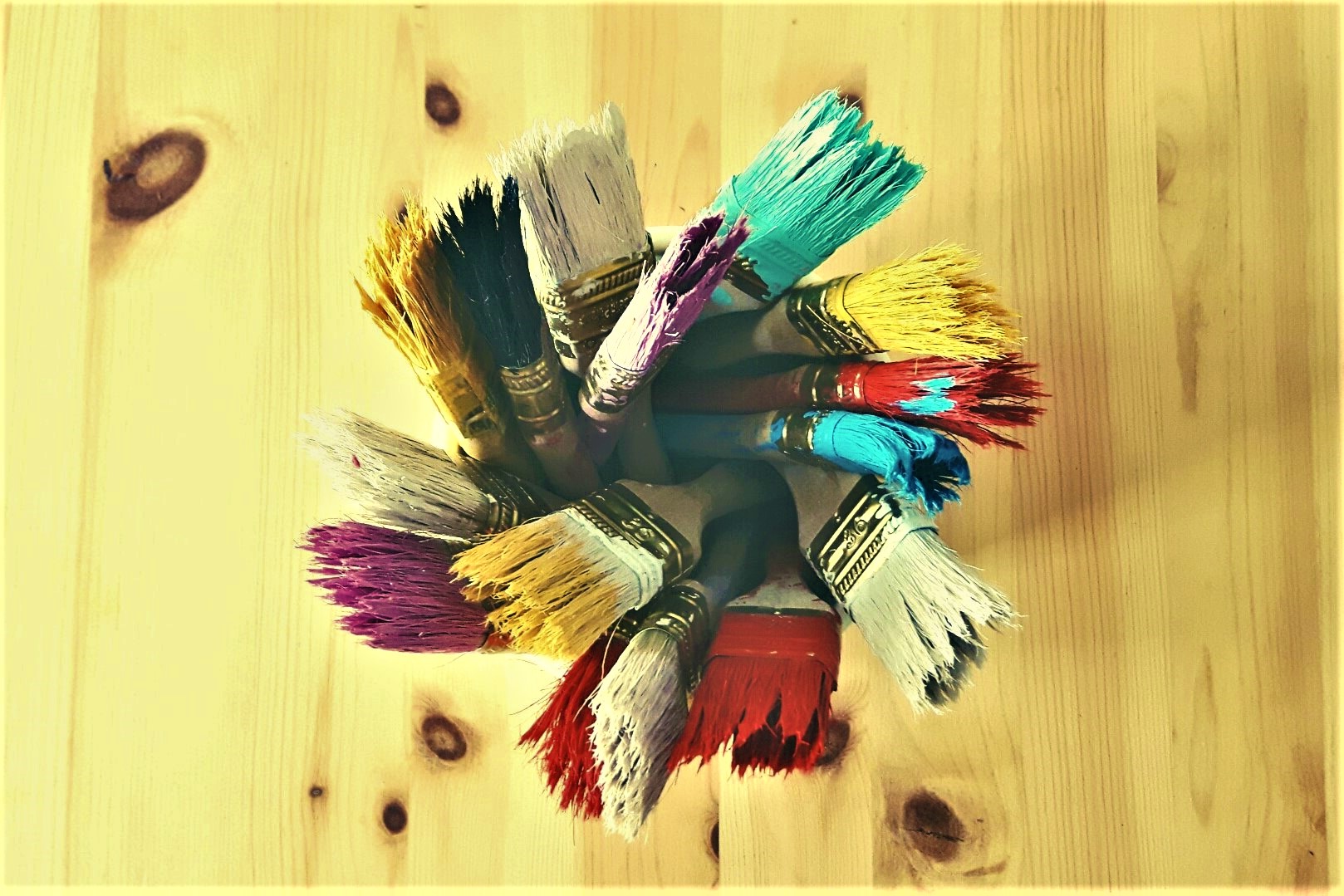
A fun alternative to the traditional unity ceremony is the Unity Painting Ceremony, which allows the couple to celebrate their unity ceremony in an artistic way that truly represents themselves.
The unity painting ceremony requires more supplies than your typical unity ceremony: different colors of paint, jars or squirt bottles, canvas, easel, drop-cloth and maybe paintbrushes. However, the act of the painting, along with hearing the ceremony, is a fabulous visualization of the ceremony’s symbolism.
Below is a sample of the wording:
Every marriage starts out as a blank canvas and every day is a splash of color. This canvas represents the day of the
The paint colors signify the experiences that lie ahead; colors of joys and sorrows, blessings and heartache.
The colors represent ________ and ________’s milestones, their celebrations, tribulations, passions and dreams. They are the moments that become the days that make-up the years.
There will be places on the canvas when the colors blend and mix, flowing together, creating a new color of experiences shared.
There will be places when the colors stay separate and stand out alone and independent… yet, still a compliment to the bold color by its side.
And there may be places of contrast. Parts of the canvas that look dark or messy and not at all to
Each color, contrast, shadow, blend as unique and beautiful as ________ and ________.
VEIL AND CORD
CEREMONY
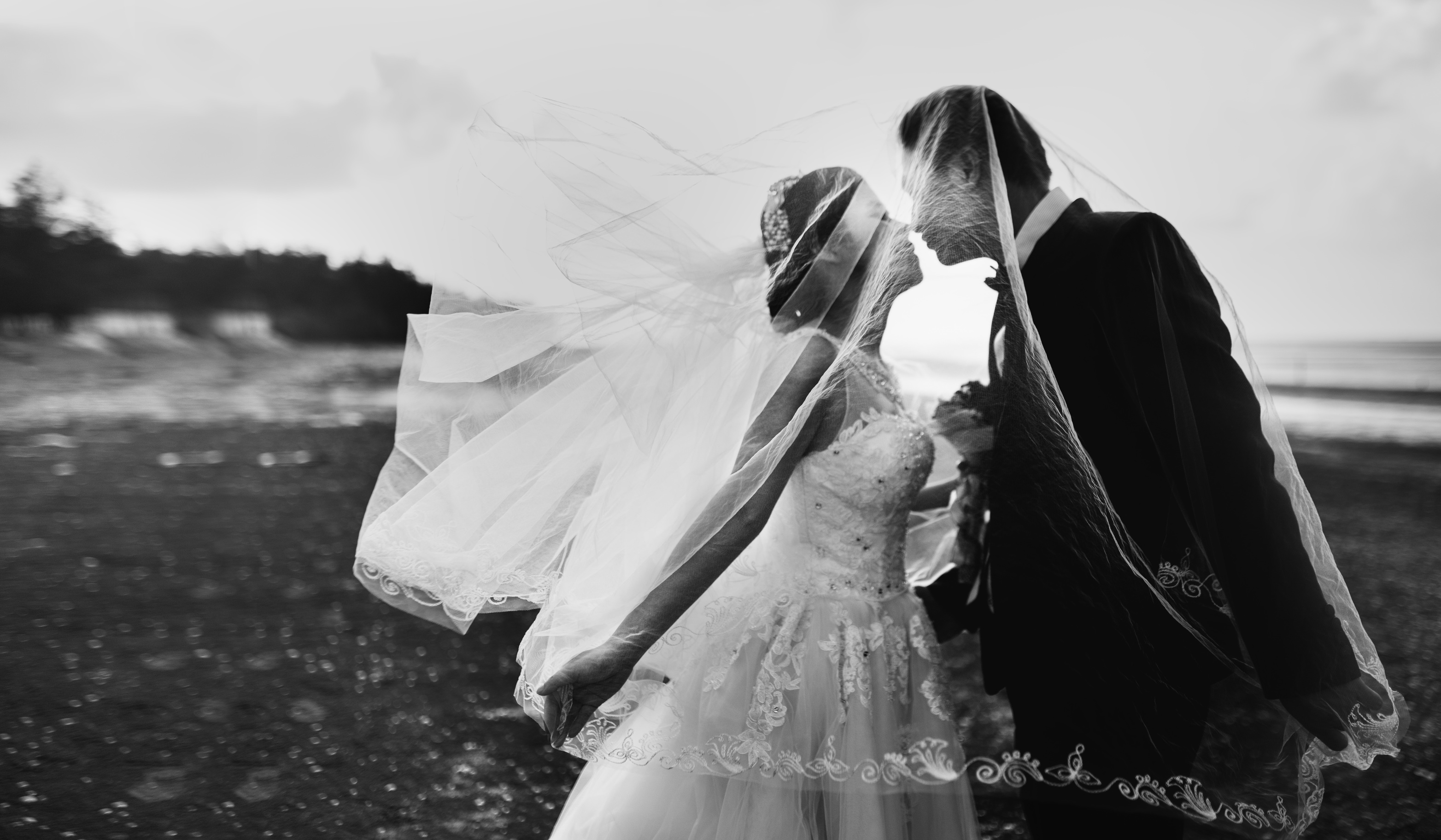
In a Filipino wedding, the Cord and Veil ceremony takes place after the couple has been pronounced husband and wife. The Officiant reads as the veil sponsors,
The veil symbolizes living under God’s protection and being clothed as one. The cord is looped in a figure-8, the symbol of infinity, and placed over the couple by Cord Sponsors. It represents the ties that bind the couple together who will now walk through life as equals.
Sample Reading for the Filipino Cord and Veil Ceremony:
[Veil Ceremony]
________ and ________, I ask SPONSOR 1 and SPONSOR 2 to join us and to lay a veil over you to clothe you together.
(SPONSOR 1 will pin the veil on Spouse1’s right, while SPONSOR 2 will drape the veil over Spouse2’s head and pin it on the left.)
Let this be a symbol of the faithful love you have for each other. Through the passing of the years, let the veil remind you that you belong to each other and to no one else.
[Cord Ceremony]
________ and ________, I invite SPONSOR 1 and SPONSOR 2 to place a cord over you.
(SPONSOR 2 will place the cord over Spouse2’s head and rest it on her/his shoulders, while SPONSOR 1 will place the cord over Spouse1’s head and rest it on his/her shoulders.)
This cord symbolizes an infinite bond of love you share that keeps your relationship strong in the face of adversity, as well as that you both are no longer two, but one in marriage. May this cord remind you to face your life together courageously and to be mutual in support of each other in carrying out your duties and responsibilities as a couple. And, may your love grow stronger and bind you closer together through the years.
[Removal of Veil and Cord]
I would like to call on the sponsors to remove the cord and veil.
WINE
CEREMONY

Using both red and white wines, the Wine Ceremony represents the blending of two lives together in matrimony. The wines, each in a small carafe, are poured together into a larger carafe. The couple then pours some of the blended wine into two wine glasses, and they drink a toast to one another.
Here is an example:
“Officiant: To symbolize and celebrate the blending of your two lives into one, I invite you to perform the Wine Ceremony.
(The couple each takes an individual carafe and pours some wine into the larger carafe. Spouse1 pours the blended wine from the large carafe into a wine glass for Spouse2. Spouse2 then pours the blended wine from the large carafe into a wine glass for Spouse1.)
Officiant: Spouse1, you may now toast Spouse2.
Spouse1 toasts with, ‘Now our lives are one,’ and drinks from the glass.
Officiant: Spouse2, you may now toast Spouse1.
Spouse2 toasts with, ‘Now our lives are one,’ and drinks from the glass.
Officiant: This ceremony represents your two individual lives, combined like the two wines into one single life. The drinking of the combined wine signifies the commitment you now make to live your lives as one family. May you remember this day of commitment you have sealed with drinking of the new wine, joining your lives as one.”
Another version of this ceremony uses both a bitter and a sweet wine. The couple drinks one and then the other, symbolizing that the marriage bond shall persist in times of joy, and times of hardship.
STILL MIND MINISTRIES is located in the beautiful city of London, Ontario. We aim to help people achieve their Spiritual-wellness goals through a variety of individual services and community outreach.
For more information see our About page, contact us by email at laura@stillmindministries.com
Blessings to you!
